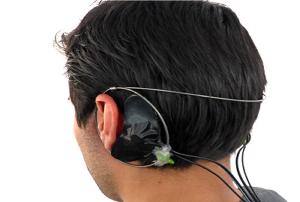Aug 25 2014
The device has technology able to calculate the trail of each person, and through an electronic compass provides precise routes.

Specialists at the Monterrey Institute of Technology (ITESM) developed a device able to guide blind or visually impaired people in established routes through electrical stimulation of the organs associated with balance (vestibular apparatus).
The development has the potential to guide blind people in places like hospitals, offices, schools and shopping centers. It is synchronized with, previously designed, virtual maps of indoor environments that are inserted in a memory.
According to Alfredo Victor Mantilla Caeiros, professor at the Department of Mechatronics in Mexico City’s Campus, the device can be calibrated according to the characteristics of each person. For example, he explained, it can be adapted to the length of the legs or the average size of the steps.
The device looks like a belt, but in reality is a system known as "inertial navigation". This is a set of instruments designed to measure acceleration (accelerometers), an electronic compass pointing to the right direction and the vestibular system, which is the technology that emits micro-electric shocks to the organs responsible balance.
"In addition, technology is overall complemented by geo-positioning systems (GPS) and ultrasonic sensors to detect objects that were not anticipated in the route," said Mantilla Caeiros. The specialist at Tec de Monterrey specified that electrical stimuli arrive at the time the person has to turn left or right to reach its endpoint.
When questioned about the advantages the device has against other auxiliary tools, the specialist said that with this technology there is no interference to other senses (touch, hearing) that the blind person needs to develop accurately. The researcher also commented that other systems that only employ GPS or radio frequency technologies are not accurate enough to locate people in places like offices or schools.
Currently, the Monterrey Institute of Technology has a first prototype of the device, with a patent pending. The researcher added that specialists in electronics and biomedical engineering at this university that develop such technology are currently perfecting calibration and automation development to suit the needs of each person.